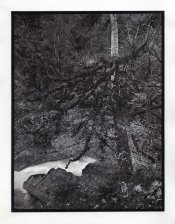Mac064
Member
- Joined
- Oct 20, 2008
- Messages
- 94
- Format
- Holga
I am sure that this has come up before in various threads but I want to try and pull this together in a 101 format for my small brain.
I have done some Van Dyke and Argyrotype prints in the past as one off experiments, more than anything. I have, however, a specific project that I want to use one (or maybe both) processes in. I have all the material to mix either solutions and think that I have the right paper (I realise that Argyrotype is far more 'paper sensitive' than VDB but I have Fabriano 5 and Hahnehmule paper which I have used before which seems to work).
Here is the thing. I would really appreciate someone explaining about the archival qualities of both processes. All the books say that VDB (and Kallitypes generally) are less archival than the Argyrotype and that Kallitypes generally are not as archival and regular silver gelatin prints. Although the literature stetes this, it doesn't expand on what that in practical terms means. I have the following questions that I would really appreciate some assistance with:
a. I take it at face value that that the iron salt is susceptibile to attack but what does that exactly mean and what affects this attack?
b. How long is a VDB/argyrotype image likely to last generally? How do I ensure that my prints last as long as possible.
c. If I sell my work do I run a risk of the image deteriorating quickly?
d. What effect does toning have? I have read that selenium and gold toning can bleach the image if it is left too long. Can sepia toning work (accepting that all Kallitypes are brown and a further sepia tone may have no effect at all)?
e. I use a lot of mixed media in my photography including waxing/encaustic waxing my prints, what effect, if any, would coating a VDB/argyrotype print in wax have (in particular would this protect the image from attack or make it worse)?
I know this is a lot and any help would be greatly appreciated but I really would like to get to the bottom of this, if I can. The last thing I would wish for is to sell some work only to find in a period of time it deteriorates.
Thanks for taking time to read the thred.
I have done some Van Dyke and Argyrotype prints in the past as one off experiments, more than anything. I have, however, a specific project that I want to use one (or maybe both) processes in. I have all the material to mix either solutions and think that I have the right paper (I realise that Argyrotype is far more 'paper sensitive' than VDB but I have Fabriano 5 and Hahnehmule paper which I have used before which seems to work).
Here is the thing. I would really appreciate someone explaining about the archival qualities of both processes. All the books say that VDB (and Kallitypes generally) are less archival than the Argyrotype and that Kallitypes generally are not as archival and regular silver gelatin prints. Although the literature stetes this, it doesn't expand on what that in practical terms means. I have the following questions that I would really appreciate some assistance with:
a. I take it at face value that that the iron salt is susceptibile to attack but what does that exactly mean and what affects this attack?
b. How long is a VDB/argyrotype image likely to last generally? How do I ensure that my prints last as long as possible.
c. If I sell my work do I run a risk of the image deteriorating quickly?
d. What effect does toning have? I have read that selenium and gold toning can bleach the image if it is left too long. Can sepia toning work (accepting that all Kallitypes are brown and a further sepia tone may have no effect at all)?
e. I use a lot of mixed media in my photography including waxing/encaustic waxing my prints, what effect, if any, would coating a VDB/argyrotype print in wax have (in particular would this protect the image from attack or make it worse)?
I know this is a lot and any help would be greatly appreciated but I really would like to get to the bottom of this, if I can. The last thing I would wish for is to sell some work only to find in a period of time it deteriorates.
Thanks for taking time to read the thred.














